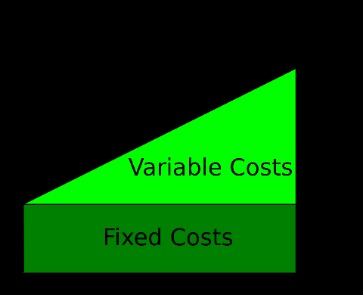
Knowing your business’s financial health is key to budgeting, decision making, and implementing change. The Loss of any particular period depends on low revenue and high expenses. If revenue gets by the business is less then its expenses during the particular period then this amount will be known as loss. When an insurer receives a claim, it doesn’t open its checkbook immediately.
Depreciation expense is reported on the income statement as any other normal business expense. If the asset is used for production, the expense is listed in the operating expenses area of the income statement. This amount reflects a portion of the acquisition cost of the asset for production purposes. The loss ratio is calculated by dividing the total incurred losses by the total collected insurance premiums.
Returning Disney CEO Bob Iger announces plans for sweeping overhaul
Here are some situations in which it may make more sense to refer to “costs” rather than “expenses” (or vice versa). Expenses are used to produce revenue (seek profit) and they are deductible on your business tax return, reducing the business’s income tax bill. To be deductible, they must be “ordinary and necessary” to the business.
M1 Finance vs. Merrill Guided Investing: Which Should You Choose? – Investopedia
M1 Finance vs. Merrill Guided Investing: Which Should You Choose?.
Posted: Fri, 01 Sep 2023 19:24:42 GMT [source]
It first does its due diligence to ensure that the damages claimed by a policyholder are accurate. The absence of an investigation could lead to losses from fraudulent claims. As far as loss is concerned it is the outflow of funds or cash which arises not due to business transactions but due to some other events. For example loss due to lawsuit or due to fire in the building in case it is not insured. Hence loss is outflow of funds without any matching economic benefit. This could be due to a number of factors, such as a decrease in sales, a natural disaster, or even a change in the economy.
Profit and Loss Statement
All the business assets are combined for the purpose of the balance sheet. Accumulated depreciation is a measure of the total wear on a company’s assets. In other words, it’s the total of all depreciation expenses incurred to date. The main difference between expenses and losses is that expenses are incurred in order to generate revenues, while losses are related to essentially any other activity. Another difference is that expenses are incurred much more frequently than losses, and in much more transactional volume. For example, factory machines that are used to produce a clothing company’s main product have attributable revenues and costs.
- Separating these usual gains and losses gives a more accurate picture of the company’s financial standing because they are not skewed by isolated occurrences.
- Accumulated depreciation, on the other hand, is the total amount that a company has depreciated its assets to date.
- A loss is a reduction in value that is not related to earning revenue.
- The loss ratio is calculated by dividing the total incurred losses by the total collected insurance premiums.
- One of the main differences between loss and expense is that total loss is computed with the help of total expenses and affects the total capital invested in the business.
One of the main differences between loss and expense is that total loss is computed with the help of total expenses and affects the total capital invested in the business. On the other hand, expenses do not directly affect the capital invested a guide to audit materiality and performance materiality in a business. If your business ships products to customers, then you will need to factor in the cost of shipping when budgeting and planning. Shipping costs are a necessary part of doing business, so they can be considered an expense.
Examples of Losses
Expense is a cost whose utility has been used up; it has been consumed. In the second case, converting from an asset to an expense is achieved with a debit to the cost of goods sold and a credit to the inventory account. Thus, in both cases, we have converted a cost that was treated as an asset into an expense as the underlying asset was consumed. The automobile asset is being consumed gradually, so we are using depreciation to eventually convert it to expense. The inventory item is consumed during a single sale transaction, so we convert it to expense as soon as the sale occurs.
It measures profits earned through daily underwriting activities and excludes investment-related income. Fraudulent insurance claims are believed to cost insurers billions of dollars. These claims drive up insurance premiums for the rest of the customers as insurance companies must count fraudulent claims in their cost of doing business. LAEs will vary widely depending upon how difficult a claim is to investigate. Even in cases where the LAE is high, insurance companies deem the expense worth it to avoid being bilked by fraudulent claims. The investigation of claims can be a deterrent to those who might file fraudulent claims for an easy payday.
Is Accumulated Depreciation Equal to Depreciation Expense?
The P&L statement is the most common financial statement, and it promptly shows how much profit or loss a business generates. Unlike a balance sheet, the P&L statement shows changes in a company’s revenue, expenses and costs over time. Costs don’t directly affect taxes, but the cost of an asset is used to determine the depreciation expense for each year, which is a deductible business expense. Depreciation is considered a “non-cash expense” because no one writes a check for depreciation, but the business can use it to reduce income for tax purposes.

In other words, it is revenues less expenses related to the production of goods sold. For other types of businesses, the company’s profits and losses are passed through to the owners and reported on their personal tax returns. These can include sole proprietors, partnerships and S corporations. An expense ratio is a common way of letting investors know how much it costs to invest in a certain product (mutual fund, ETF, etc.). The ongoing expense is expressed as a ratio of the total investment. For example, if you have $1,000 invested in a mutual fund with an expense ratio of 0.05%, then you will pay $50 per year in fees.
An expense is defined as “an amount of money spent, typically in a particular area.” When it comes to businesses, expenses are typically incurred in the course of running the business. These can include things like office supplies, inventory, shipping costs, etc. Basically, anything that the business needs in order to function on a day-to-day basis can be considered an expense.
Chindata Group Reports Fiscal Year 2023 Second Quarter and Half … – GlobeNewswire
Chindata Group Reports Fiscal Year 2023 Second Quarter and Half ….
Posted: Thu, 31 Aug 2023 11:27:00 GMT [source]
Two of these terms are “expenses” and “losses.” But what exactly is the difference between the two? Gains and losses are treated differently for tax purposes, depending on if they are short-term (usually occurring in 12 months or less) or long-term (taking place over more than one year). Gains can typically also be offset by corresponding losses for tax purposes. Conversely, a loss is realized whenever a company loses money through secondary activity.
Business Irregular Losses
She has worked in multiple cities covering breaking news, politics, education, and more. Her expertise is in personal finance and investing, and real estate. Loss is also used to describe write-down of inventory from cost to market.
